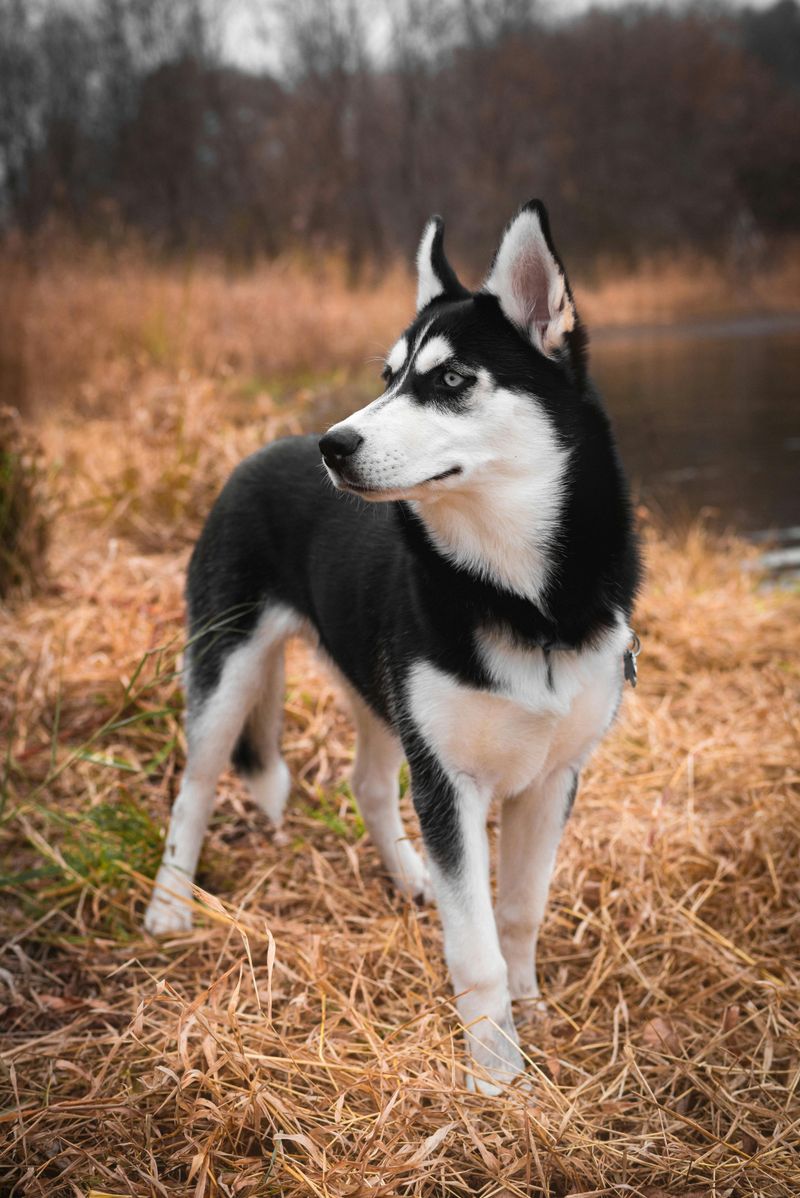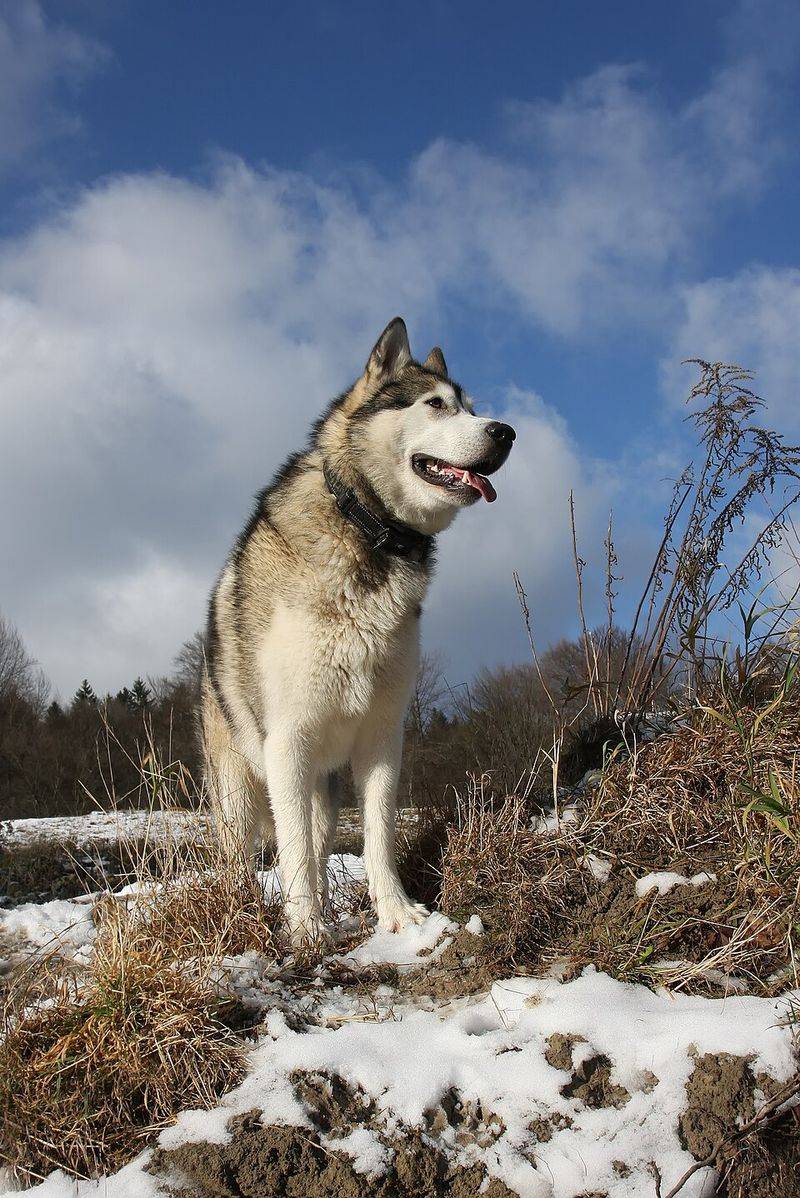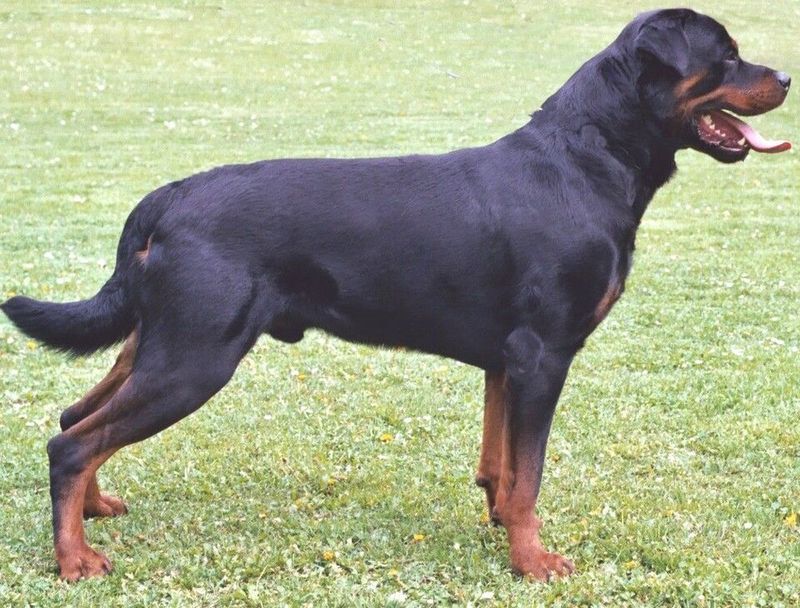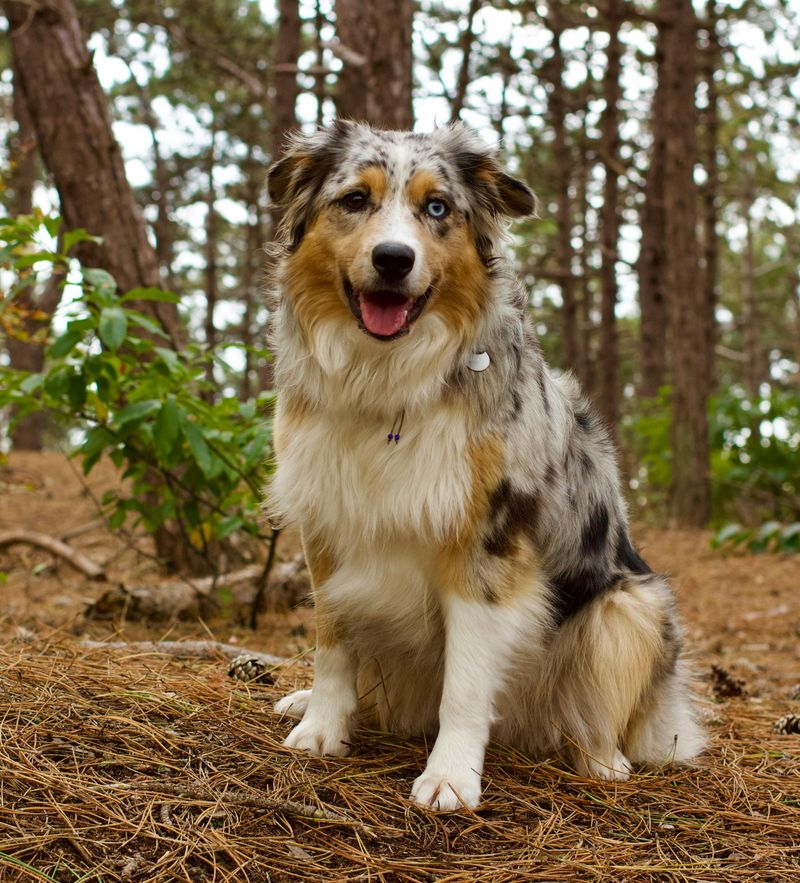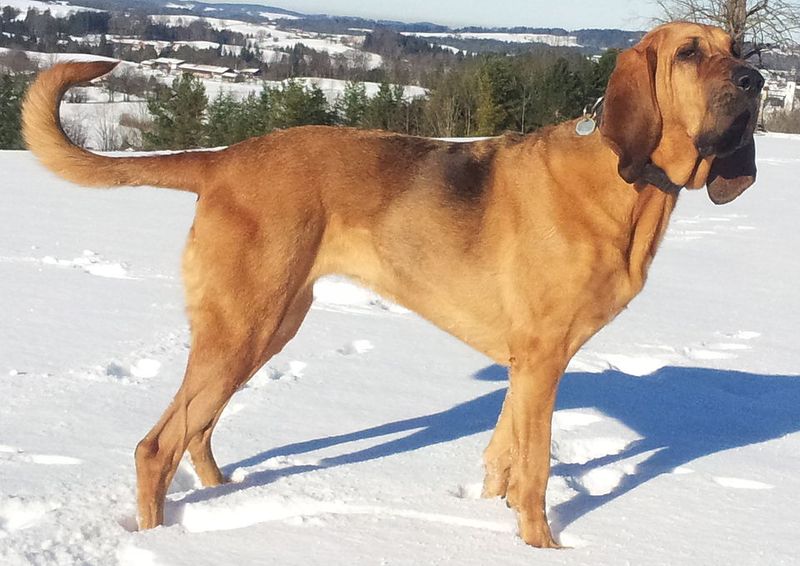Living in an apartment can be a challenge for some dog breeds that thrive on space and activity. Here’s a look at twelve breeds that prefer more room to roam.
Siberian Husky
The Siberian Husky, with its striking eyes and fluffy coat, is built for adventure. They need vast spaces to roam and daily, high-intensity exercise to satisfy their energetic spirit. In an apartment, their penchant for activity can lead to restlessness.
Their history as sled dogs in the harsh climates of Siberia means they’re well-suited for outdoor activities, ideally in cooler environments. Without sufficient outlets for their energy, they might become unruly or bored.
Huskies also have a strong pack mentality, requiring significant attention and interaction. As such, apartment life might not fulfill their social and physical needs.
Border Collie
Border Collies are known for their unparalleled intelligence and agility. Originally bred for herding, they require constant mental and physical stimulation. Confined spaces can be particularly challenging for them as they thrive on activity.
These dogs are not just energetic but also highly trainable, which is why they excel in agility sports. Without sufficient challenges, they can become bored and potentially destructive at home.
An apartment might restrict their natural instincts, making frequent outdoor adventures a necessity. Their boundless energy and need for tasks can make apartment living a difficult fit.
German Shepherd
German Shepherds are renowned for their loyalty and intelligence. Their large, active nature requires ample space and stimulation, which apartments often can’t provide.
Originally bred for herding and protection, they possess a strong work ethic and thrive with tasks. In small living areas, they may become bored or restless, especially without regular exercise.
These dogs are keen learners and need mental challenges to stay sharp. Their protective instincts might also be heightened in confined environments, necessitating proper outlets for their energy and vigilance.
Belgian Malinois
The Belgian Malinois is a breed that thrives on both physical and mental challenges. Known for their agility and intelligence, they demand rigorous daily exercise and stimulation.
These dogs excel in various dog sports and are often employed in police and military roles due to their unmatched focus and drive. Apartment living might not satisfy their need for activity.
Without sufficient challenges, they can become restless or exhibit behavioral problems. Their intense energy and dedication to tasks make them better suited for environments where they can consistently engage in activities.
Alaskan Malamute
Alaskan Malamutes are powerful and energetic, built for the great outdoors. These dogs prefer cooler climates and wide-open spaces, making apartment life challenging.
Originally bred for hauling heavy loads across long distances, Malamutes have unmatched stamina. In confined spaces, they may feel confined and become bored.
Their thick coat and love for snow make them better suited for cooler environments. Without ample exercise and opportunities to explore, they can develop unwanted behaviors, seeking outlets for their pent-up energy.
Dalmatian
Dalmatians, with their distinctive spots, are as energetic as they are unique. Known for high stamina, they thrive with constant movement, which makes apartment living tricky.
These dogs were historically carriage dogs, running alongside horse-drawn vehicles, which explains their need for speed and action. In confined spaces, they might feel constrained and restless.
Without extensive exercise routines, Dalmatians can become anxious or develop behavioral issues. They are social creatures who enjoy attention, making them better suited for environments where they can express their lively personalities.
Weimaraner
The Weimaraner is a breed known for its sleek, silver-gray coat and boundless energy. They require long runs and mental stimulation to remain balanced and happy.
Originally bred for hunting, these dogs have a strong prey drive and an insatiable appetite for adventure. Apartment life may not provide the space they need to thrive.
Without enough physical and mental activity, Weimaraners can become anxious or destructive. They benefit from environments where they can engage with their surroundings and enjoy ample exercise.
Rottweiler
Rottweilers are known for their strength and protectiveness. Their large frame and territorial instincts make tight spaces like apartments stressful for them.
These dogs were originally bred to herd livestock and pull carts, which explains their need for physical exercise and mental engagement. In confined living quarters, they might become bored or anxious.
Rottweilers thrive in environments where they can patrol and protect their territory. Without ample space and stimulation, they may struggle to find their place, becoming restless or agitated.
Australian Shepherd
Australian Shepherds are highly active and intelligent, bred for herding livestock. Their energy levels and need for mental challenges make apartment life less than ideal.
These dogs excel in agility and obedience sports, thriving on tasks and activities that stimulate their minds. Without constant engagement, they can become bored and frustrated in confined spaces.
They require extensive exercise and enjoy environments where they can explore and work. An apartment often lacks the room they need to indulge their natural instincts and keep their agile minds occupied.
Great Dane
Despite their gentle demeanor, Great Danes are simply too large for small apartments. Their size demands ample space to move around comfortably.
These gentle giants are known for their affectionate nature, often described as “gentle giants.” However, their large frames need adequate room to avoid feeling cramped.
While they may enjoy lounging around, they still require regular walks and exercise to stay healthy. Without enough space, they might feel restricted, which can affect their well-being and happiness.
Vizsla
Vizslas are energetic and social creatures that require extensive exercise and human interaction. Their lively personality makes confined spaces challenging.
These dogs are known for their affectionate nature, often described as “velcro dogs” because of their attachment to their owners. In apartments, their need for companionship and activity might not be fully met.
They thrive in environments where they can run freely and interact with people. Without sufficient exercise, they may become anxious or develop behavioral issues, needing an active and engaging lifestyle to be content.
Bloodhound
Bloodhounds, with their extraordinary scent-tracking abilities, are always on the move, making apartment life difficult. Their natural instincts drive them to explore.
Known for their droopy ears and soulful eyes, Bloodhounds need ample space to satisfy their curiosity. In confined environments, they might become restless as their powerful nose leads them on imaginary scent trails.
These dogs thrive in environments that allow them to track and sniff, requiring regular outdoor adventures. Without enough mental and physical stimulation, they might feel trapped and bored indoors.

